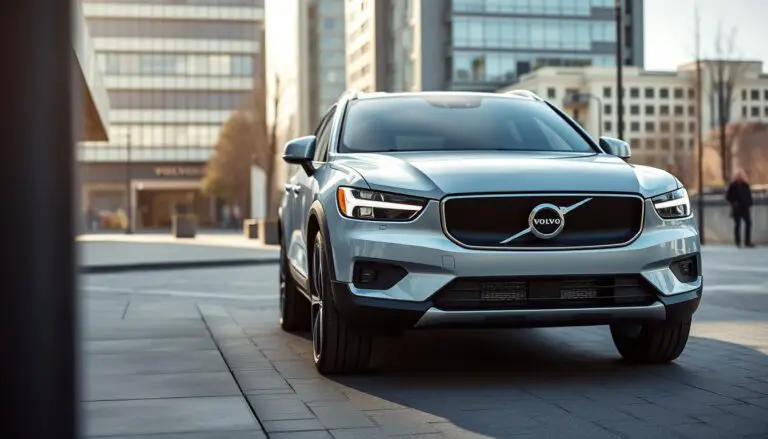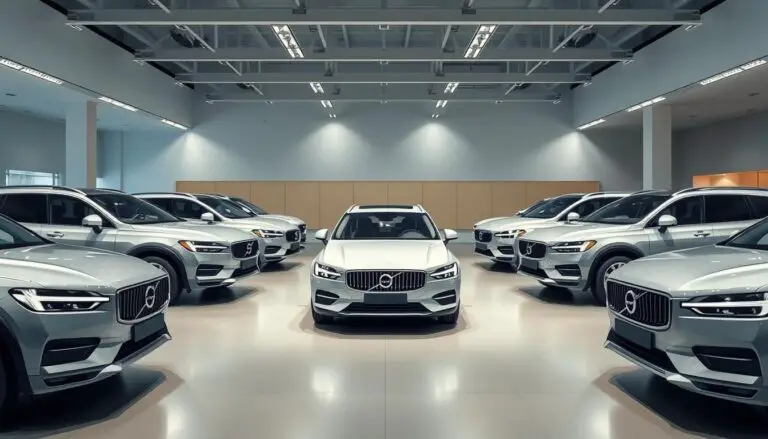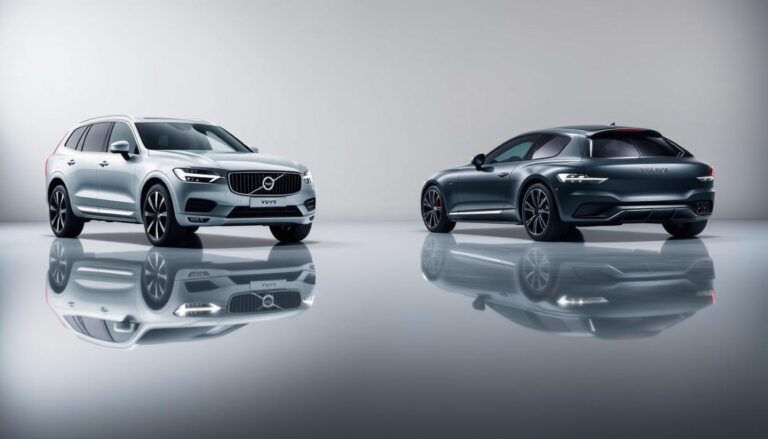Choosing the right luxury compact SUV can be a daunting task, especially when faced with highly competitive models like the Volvo XC40 and BMW X1. Both vehicles promise to deliver a blend of luxury, performance, and advanced technology.
This comparison aims to guide potential buyers through the key differences and similarities between these two popular models, helping you make an informed decision. With a focus on their design, performance, features, and overall value, we will explore what sets these vehicles apart in the crowded luxury compact SUV market.
Key Takeaways
- Comparison of design and features of Volvo XC40 and BMW X1
- Performance capabilities of both luxury compact SUVs
- Analysis of safety features and technologies
- Overview of pricing and overall value
- Insights into which model might be the best fit for different needs
The Luxury Compact SUV Market in 2023
In 2023, the luxury compact SUV market is characterized by a blend of innovative technology, sustainable practices, and refined design philosophies. This segment has become a battleground for premium automakers, with consumers demanding more in terms of performance, luxury, and eco-friendliness.
Current Trends in Luxury Compact SUVs
The current trends in luxury compact SUVs are driven by technological advancements, environmental concerns, and shifting consumer preferences. Electrification is a key trend, with many manufacturers introducing hybrid and electric models to reduce carbon footprints. Additionally, there’s a significant focus on advanced safety features, including collision avoidance systems and driver assistance technologies.
Another trend is the incorporation of premium materials and craftsmanship in the interior design, enhancing the overall driving experience. Luxury compact SUVs are also becoming more connected, with infotainment systems that offer seamless integration with smartphones and other devices.
Why the Volvo XC40 and BMW X1 Stand Out
The Volvo XC40 and BMW X1 are standout models in the luxury compact SUV market, each offering unique strengths. The Volvo XC40 is renowned for its emphasis on safety and sustainability, featuring a comprehensive suite of safety features and a range of eco-friendly powertrains.
The BMW X1, on the other hand, is celebrated for its agile handling and premium driving dynamics. It offers a compelling blend of performance, luxury, and practicality, making it a favorite among driving enthusiasts.
Volvo XC40 vs BMW X1: A Direct Comparison
When it comes to luxury compact SUVs, the Volvo XC40 and BMW X1 are two of the most compelling options available today. Both vehicles have garnered significant attention for their unique blend of style, performance, and technology. To help potential buyers make an informed decision, it’s essential to directly compare these two models across various dimensions.
Key Differences at a Glance
The Volvo XC40 and BMW X1 exhibit distinct design philosophies, reflecting their brand identities. The Volvo XC40 is characterized by its bold exterior design and emphasis on safety features, including a comprehensive suite of driver assistance systems. In contrast, the BMW X1 is known for its agile handling and premium interior. A key difference lies in their powertrains; the Volvo XC40 offers a range of efficient engine options, while the BMW X1 is praised for its responsive driving dynamics.
Target Audience for Each Model
The target audience for the Volvo XC40 tends to prioritize safety, sustainability, and Scandinavian design. This model appeals to individuals and families seeking a luxury SUV that not only offers a premium driving experience but also aligns with their values regarding environmental responsibility. On the other hand, the BMW X1 is geared towards drivers who value performance, handling, and the driving experience. This model is ideal for those who enjoy a more engaging drive and are willing to pay a premium for it.
Understanding the target audience for each model can help buyers determine which vehicle best suits their lifestyle and preferences. Whether you prioritize safety features, driving dynamics, or luxury amenities, a direct comparison between the Volvo XC40 and BMW X1 will guide you towards making the right choice.
Volvo XC40: Overview and Key Features
The Volvo XC40 represents a significant shift in the luxury compact SUV landscape, combining Scandinavian design with cutting-edge technology. This vehicle is designed to provide a premium driving experience, blending style, performance, and advanced safety features.
Design Philosophy and Exterior
The Volvo XC40’s design is characterized by its clean lines, bold shapes, and a compact footprint. The exterior is not only visually appealing but also incorporates advanced safety features, such as LED headlights and a robust body structure. The XC40’s design philosophy emphasizes both form and function, making it a standout in its class.
Interior Quality and Space
Inside, the Volvo XC40 offers a luxurious and spacious cabin, featuring high-quality materials and advanced infotainment systems. The interior design prioritizes comfort and practicality, with ample legroom and cargo space. The XC40’s interior is designed to provide a serene driving environment, minimizing distractions and maximizing enjoyment.
Available Trims and Powertrains
The Volvo XC40 is available in several trims, each offering a unique blend of features and capabilities. The range includes:
- Gas Models: Offering a balance between performance and efficiency, the gas models are perfect for those seeking a traditional driving experience.
- Electric and Hybrid Options: For those looking for a more sustainable option, the XC40’s electric and hybrid models provide reduced emissions without compromising on performance.
Gas Models
The gas models of the Volvo XC40 are equipped with powerful engines, providing a responsive and engaging drive. For more information on comparing Volvo with other luxury brands, you can visit Volvo vs Audi.
Electric and Hybrid Options
The XC40’s electric and hybrid options offer a compelling alternative for eco-conscious drivers. These models maintain the vehicle’s renowned safety standards while reducing environmental impact.
BMW X1: Overview and Key Features
As a premium offering in the compact SUV segment, the BMW X1 boasts a unique blend of style, performance, and luxury. This vehicle is designed to cater to a wide range of needs, from daily commuting to adventurous weekend getaways.
Design Philosophy and Exterior
The BMW X1’s design philosophy is centered around creating a bold and dynamic presence on the road. Its exterior is characterized by sleek lines, a prominent kidney grille, and LED headlights that enhance its visual appeal. The X1 is available in a variety of exterior colors, allowing buyers to personalize their vehicle to suit their taste.
Interior Quality and Space
Inside, the BMW X1 offers a sophisticated and comfortable cabin. The interior is crafted with high-quality materials, ensuring a premium feel. The X1 provides ample space for passengers, with generous legroom and adjustable seating options. Additionally, the rear seats can be folded to expand the cargo area, enhancing the vehicle’s versatility.
Available Trims and Powertrains
The BMW X1 is available in several trims, each offering a unique set of features and capabilities. The range includes options for different powertrains, catering to various driving preferences.
Gas Models
The gas models of the BMW X1 are equipped with powerful engines, delivering a responsive and engaging driving experience. The available engine options provide a balance between performance and efficiency, ensuring that drivers can enjoy the thrill of driving without compromising on fuel economy.
Electric and Hybrid Options
For those looking for more environmentally friendly options, the BMW X1 offers electric and hybrid models. These variants combine innovative technology with sustainable performance, making them an attractive choice for eco-conscious buyers.
Performance and Driving Experience
Both the Volvo XC40 and BMW X1 are designed to deliver exceptional driving experiences, but they have distinct approaches. The Volvo XC40 is known for its responsive handling and powerful engine options, while the BMW X1 is praised for its agility and driving dynamics.
Engine Options and Power
The Volvo XC40 offers a range of engine options, including a turbocharged four-cylinder and a plug-in hybrid model. The BMW X1 also features a turbocharged four-cylinder engine, known for its strong performance and efficiency. The XC40’s engine options provide a balance between power and fuel economy, making it a versatile choice for various driving conditions.
The BMW X1’s engine is tuned for a more spirited driving experience, with quick acceleration and responsive throttle response. However, the XC40’s available plug-in hybrid option offers an additional layer of flexibility for drivers who want to minimize their environmental impact.
Handling and Ride Quality
The Volvo XC40 is praised for its agile handling and precise steering, making it a joy to drive on winding roads. The BMW X1 also excels in handling, with a compact design that enhances its agility. Both vehicles offer a comfortable ride quality, with the XC40’s suspension tuned to absorb bumps and the X1’s adaptive damping system providing a smooth ride.
Off-Road Capabilities
While both vehicles are primarily designed for on-road driving, they can handle light off-road excursions. The Volvo XC40 features all-wheel drive and a generous ground clearance, allowing it to navigate rough terrain with ease. The BMW X1 also offers all-wheel drive and has a similar ground clearance, making it capable of handling light off-road driving.
Fuel Efficiency Comparison
In terms of fuel efficiency, both vehicles offer competitive figures. The Volvo XC40’s engine options are designed to balance power and efficiency, with the plug-in hybrid model offering impressive electric-only range. The BMW X1’s turbocharged engine provides good fuel economy, especially when paired with the efficient eight-speed automatic transmission.
Technology and Infotainment Systems
In the competitive landscape of luxury compact SUVs, the Volvo XC40 and BMW X1 distinguish themselves through their cutting-edge technology and infotainment systems. Both vehicles are equipped with advanced features that enhance the driving experience, providing safety, convenience, and entertainment on the go.
Volvo’s Sensus Connect System
Volvo’s Sensus Connect system is a sophisticated infotainment platform that offers a user-friendly interface and a wide range of features. It includes a high-resolution touchscreen display, Apple CarPlay and Android Auto compatibility, and a premium audio system. The system is designed to be intuitive, allowing drivers to access navigation, entertainment, and vehicle settings with ease.
BMW’s iDrive System
BMW’s iDrive system is renowned for its advanced technology and customization options. The latest version features a gesture control and a high-resolution display, providing drivers with a comprehensive overview of their surroundings and vehicle status. iDrive also supports Apple CarPlay, enhancing connectivity and infotainment capabilities.
Driver Assistance Features
Both the Volvo XC40 and BMW X1 come equipped with a range of driver assistance features, enhancing safety on the road. These include adaptive cruise control, lane departure warning, and automatic emergency braking. These features work in tandem to reduce the risk of accidents and alleviate driver fatigue.
Connectivity and Smart Features
In terms of connectivity, both vehicles offer advanced smart features. The Volvo XC40 includes Volvo On Call, which provides remote services such as vehicle tracking and door unlocking. The BMW X1 offers BMW ConnectedDrive, enabling drivers to access a range of services including real-time traffic updates and remote vehicle control.
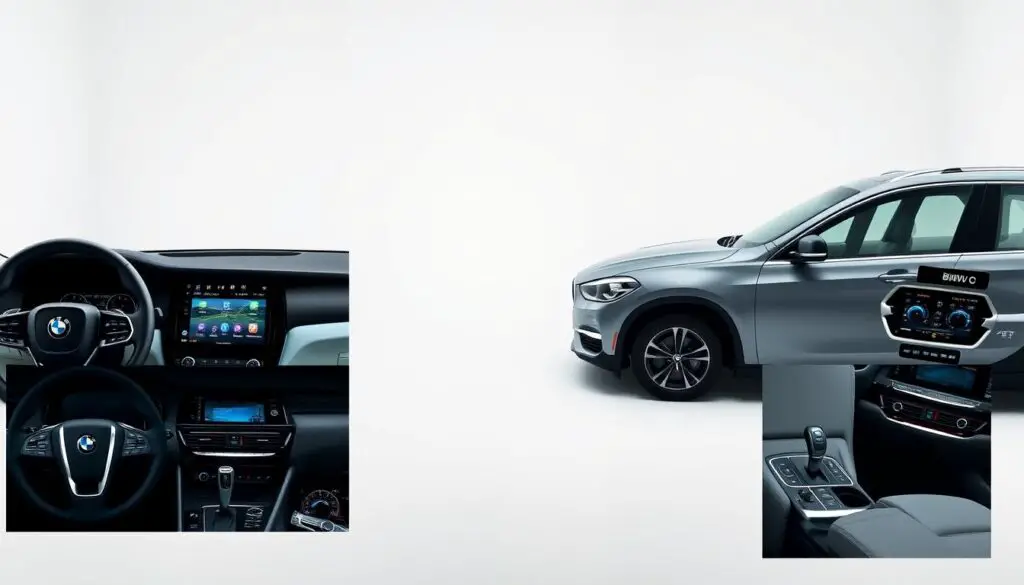
| Feature | Volvo XC40 | BMW X1 |
|---|---|---|
| Infotainment System | Sensus Connect | iDrive |
| Touchscreen Display | Yes, 9-inch | Yes, 8.8-inch or 10.25-inch |
| Apple CarPlay | Yes | Yes |
| Driver Assistance Features | Adaptive Cruise Control, Lane Departure Warning | Adaptive Cruise Control, Lane Departure Warning |
| Smart Features | Volvo On Call | BMW ConnectedDrive |
Practicality and Comfort
When it comes to luxury compact SUVs, practicality and comfort are just as important as performance and design. Both the Volvo XC40 and BMW X1 are designed to offer a blend of these qualities, but they cater to different needs and preferences.
Cargo Space and Storage Solutions
The Volvo XC40 offers up to 22.4 cubic feet of cargo space behind the rear seats, slightly less than the BMW X1’s 27.4 cubic feet. However, the XC40’s rear seats fold in a 60/40 split, providing flexibility in cargo management. The BMW X1 also offers a larger overall cargo capacity, with up to 72.4 cubic feet available with the rear seats folded.
Passenger Comfort and Space
Both vehicles prioritize passenger comfort, with the Volvo XC40 featuring premium materials and spacious legroom. The BMW X1 counters with generous headroom and an ergonomic design that enhances the driving experience. Ultimately, the choice between the two may depend on whether you prioritize rear passenger comfort or driver ergonomics.
Family-Friendly Features
Family-friendly features are abundant in both models. The Volvo XC40 includes integrated child booster seats in the rear, a feature that is particularly appealing to families. The BMW X1 offers a range of convenience features, including a panoramic moonroof and advanced climate control systems, enhancing the overall comfort for all passengers.
Daily Usability Comparison
In terms of daily usability, both SUVs excel. The Volvo XC40’s compact size makes it agile in urban environments, while the BMW X1’s powerful engine options provide a responsive driving experience. When it comes to parking and maneuverability, the Volvo XC40’s smaller dimensions give it an edge in tight city streets.
Ultimately, the decision between the Volvo XC40 and BMW X1 will depend on your specific needs regarding cargo space, passenger comfort, and family-friendly features. By comparing these practical aspects, you can make an informed decision that best suits your lifestyle.
Pricing, Value, and Ownership Costs
To make an informed decision, it’s essential to examine the total cost of ownership for both the Volvo XC40 and BMW X1. This includes not just the initial purchase price, but also ongoing expenses such as maintenance, fuel, and insurance.
MSRP and Standard Equipment
The Volvo XC40 and BMW X1 have competitive starting prices, but the standard equipment and features can vary significantly. The Volvo XC40 comes with a robust list of standard features, including advanced safety technology. For the most current pricing, visit Gunther Volvo for a detailed comparison.
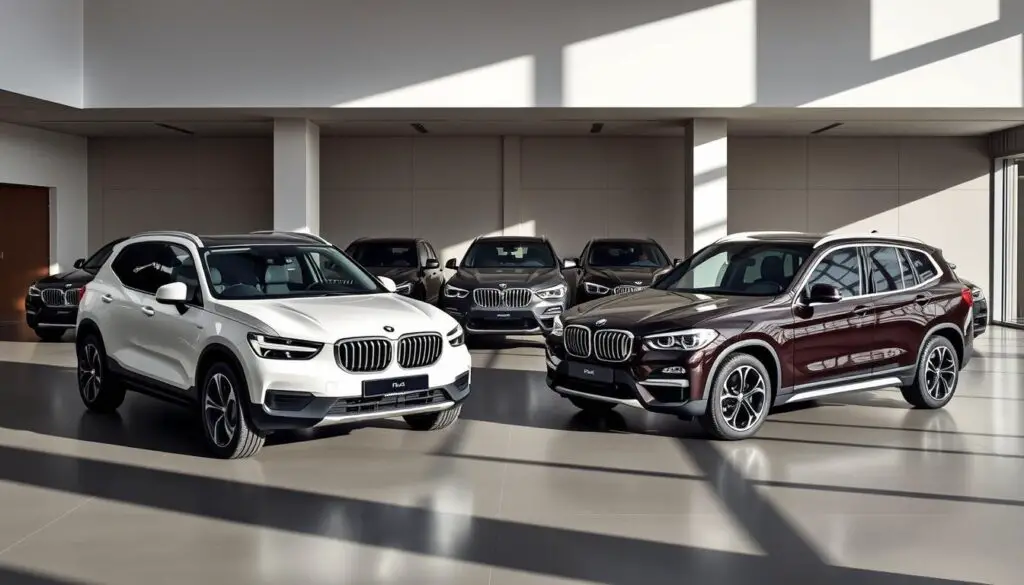
Maintenance and Reliability
Both vehicles have a reputation for reliability, but maintenance costs can differ. The Volvo XC40 is known for its durability, while the BMW X1’s maintenance costs may rise as it ages. Understanding these costs is crucial for an ownership costs comparison.
Resale Value Projections
Resale value is a critical factor in the total cost of ownership. The Volvo XC40 tends to hold its value well, thanks to its safety features and design. In contrast, the BMW X1’s resale value can be influenced by its condition, mileage, and trim level. Considering these factors will help you make a more informed decision.
Conclusion: Which Luxury Compact SUV Is Right for You?
Choosing between the Volvo XC40 and BMW X1 depends on your priorities in a luxury compact SUV. Both vehicles offer unique strengths, from design and performance to technology and practicality.
The Volvo XC40 stands out with its emphasis on safety, sustainability, and a premium interior. In contrast, the BMW X1 is known for its driving dynamics and brand heritage. When considering the best luxury compact SUV, your decision should be influenced by factors such as driving experience, interior space, and available features.
In conclusion, the Volvo XC40 is ideal for those seeking a safe, eco-friendly option with advanced technology, while the BMW X1 caters to driving enthusiasts who value performance and handling. By weighing your needs against the characteristics of each model, you can make an informed decision in the Volvo XC40 vs BMW X1 conclusion.
FAQ
What are the key differences between the Volvo XC40 and BMW X1?
The Volvo XC40 and BMW X1 differ in design philosophy, performance, features, and pricing. The Volvo XC40 is known for its emphasis on sustainability and Scandinavian design, while the BMW X1 is recognized for its driving dynamics and premium feel.
Which luxury compact SUV is more fuel-efficient?
Fuel efficiency varies depending on the specific trim and powertrain. The Volvo XC40 offers electric and hybrid options, which may be more fuel-efficient for some buyers. The BMW X1 also offers efficient powertrains, but the exact fuel efficiency depends on the model and driving conditions.
How do the Volvo XC40 and BMW X1 compare in terms of cargo space?
Both SUVs offer competitive cargo space, but the specific dimensions vary. The Volvo XC40 and BMW X1 have similar cargo capacities, with the BMW X1 offering slightly more space in some configurations.
What are the available trims for the Volvo XC40 and BMW X1?
The Volvo XC40 is available in several trims, including Momentum, Inscription, and R-Design. The BMW X1 is offered in various trims, such as sDrive28i and xDrive28i, with optional packages for added features.
How do the infotainment systems compare between the Volvo XC40 and BMW X1?
The Volvo XC40 features the Sensus Connect system, known for its user-friendly interface and seamless connectivity. The BMW X1 is equipped with the iDrive system, which offers advanced features and customization options.
What are the safety features of the Volvo XC40 and BMW X1?
Both SUVs offer advanced safety features, including driver assistance systems and collision avoidance technology. The Volvo XC40 is renowned for its safety credentials, with a comprehensive suite of standard safety features.
How do the Volvo XC40 and BMW X1 perform off-road?
While both SUVs are capable of handling light off-road driving, they are primarily designed for on-road use. The BMW X1 offers xDrive all-wheel drive, which enhances its off-road capability.
What are the resale value projections for the Volvo XC40 and BMW X1?
Resale value projections vary depending on factors like trim level, condition, and mileage. Generally, both models retain their value well, but the BMW X1 may have a slight edge in certain markets.
Which SUV is more suitable for families?
Both the Volvo XC40 and BMW X1 are suitable for families, offering comfortable seating and practical features. The Volvo XC40 is known for its family-friendly design and safety features.
What are the maintenance and reliability expectations for the Volvo XC40 and BMW X1?
Both models have reliable engines and transmissions, but maintenance costs can vary. The Volvo XC40 has a reputation for reliability, while the BMW X1’s maintenance costs may be slightly higher due to its complex technology.

